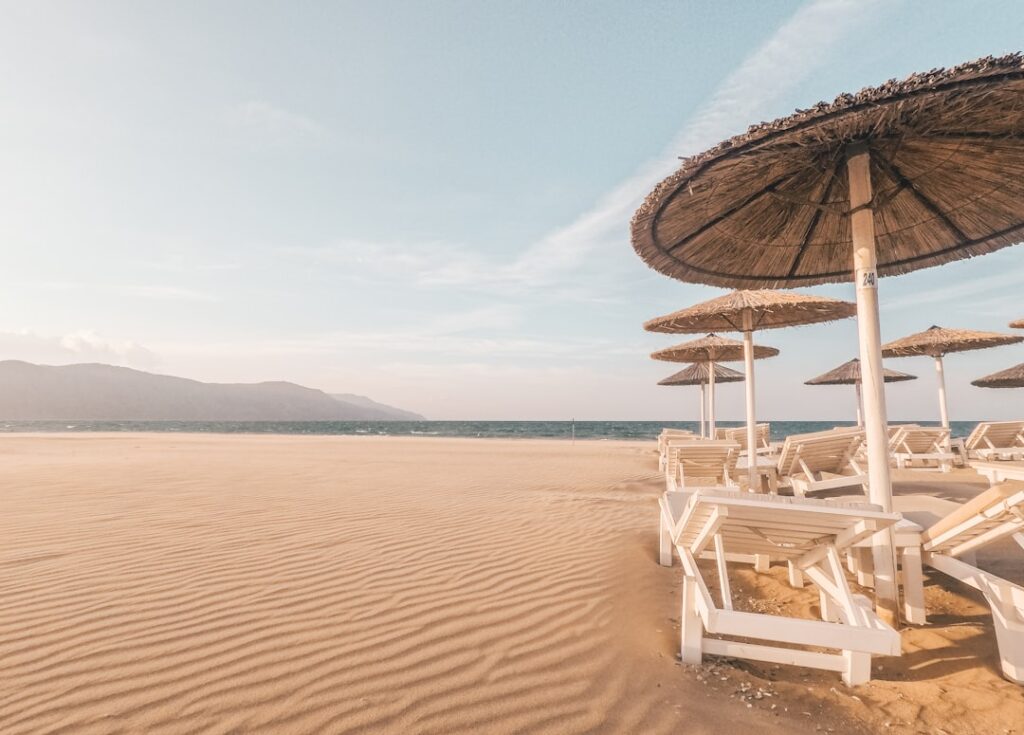Alligator Alley, also known as Interstate 75, is a stretch of highway that runs across the southern part of Florida, connecting the east and west coasts of the state. The road earned its nickname due to the large population of alligators that inhabit the nearby Everglades. The construction of Alligator Alley began in the 1960s and was completed in 1968, providing a much-needed transportation link across the state. Before the construction of the highway, traveling from one coast to the other involved a long and arduous journey through the heart of the Everglades. Alligator Alley provided a faster and more convenient route for both residents and tourists.
The construction of Alligator Alley was not without controversy, as it required extensive environmental impact studies and negotiations with local Native American tribes. The road was built on land that was once part of the Everglades, leading to concerns about the potential impact on the delicate ecosystem. Despite these concerns, Alligator Alley has become an important artery for transportation and commerce in Florida, playing a crucial role in the state’s development and growth. Over the years, the highway has undergone several upgrades and improvements to accommodate increasing traffic and ensure safety for travelers.
Key Takeaways
- Alligator Alley was originally built in the 1960s to provide a faster route across the Florida Everglades.
- The area surrounding Alligator Alley is home to a diverse range of wildlife and ecosystems, including alligators, panthers, and various bird species.
- Visitors can explore the Everglades from Alligator Alley by taking airboat tours, hiking trails, and visiting wildlife sanctuaries.
- Safety tips for traveling on Alligator Alley include watching out for wildlife on the road and being prepared for sudden weather changes.
- The best stops and attractions along Alligator Alley include Big Cypress National Preserve, Fakahatchee Strand Preserve State Park, and the Seminole Casino Hotel.
Wildlife and Ecosystems of Alligator Alley
Alligator Alley runs through the heart of the Florida Everglades, one of the most unique and diverse ecosystems in the world. The highway provides a rare opportunity for travelers to experience the natural beauty and wildlife of the Everglades up close. The wetlands along Alligator Alley are home to a wide variety of plant and animal species, including alligators, panthers, wading birds, and countless other creatures. The road also passes through Big Cypress National Preserve, a vast expanse of swamps and forests that is teeming with life.
The ecosystems along Alligator Alley are incredibly fragile and are constantly threatened by human development and climate change. Efforts to protect and preserve these habitats are ongoing, with organizations and government agencies working to ensure the long-term survival of the Everglades. Travelers on Alligator Alley have the opportunity to learn about these efforts and gain a deeper appreciation for the importance of conservation. By understanding the delicate balance of these ecosystems, visitors can help contribute to their preservation and sustainability for future generations to enjoy.
Exploring the Everglades from Alligator Alley
Alligator Alley provides easy access to the Everglades, allowing travelers to explore this unique wilderness and experience its natural wonders. There are numerous opportunities for outdoor activities such as hiking, birdwatching, kayaking, and airboat tours. Visitors can also learn about the history and culture of the area by visiting museums and cultural centers along the highway. The Everglades offer a chance to disconnect from the hustle and bustle of city life and immerse oneself in the tranquility of nature.
Exploring the Everglades from Alligator Alley is an adventure that offers something for everyone, from adrenaline-pumping airboat rides to peaceful nature walks. The diverse landscapes and abundant wildlife make it a paradise for nature enthusiasts and photographers. Whether it’s spotting an alligator basking in the sun or witnessing a majestic bald eagle soaring overhead, the Everglades never fail to leave a lasting impression on those who visit. The unique combination of wetlands, forests, and prairies creates an unparalleled experience that showcases the beauty and complexity of this remarkable ecosystem.
Safety Tips for Traveling on Alligator Alley
| Safety Tips for Traveling on Alligator Alley |
|---|
| Avoid driving at night |
| Obey the speed limit |
| Stay alert for wildlife crossing the road |
| Keep a safe distance from other vehicles |
| Use headlights during rain or fog |
Traveling on Alligator Alley requires some precautions due to its remote location and potential encounters with wildlife. It’s important for travelers to be aware of their surroundings and take necessary safety measures to ensure a smooth journey. One of the most important safety tips is to be mindful of wildlife crossings, especially at dawn and dusk when animals are most active. Slowing down and staying alert can help prevent collisions with animals such as deer, panthers, or alligators.
Another safety consideration is the potential for severe weather, particularly during hurricane season. It’s essential for travelers to stay informed about weather conditions and have a plan in place in case of an emergency. Additionally, carrying a basic emergency kit with essentials such as water, food, and a first aid kit is advisable when traveling through remote areas. By being prepared and staying vigilant, travelers can enjoy a safe and memorable journey along Alligator Alley.
Best Stops and Attractions along Alligator Alley
Alligator Alley offers several noteworthy stops and attractions that provide insight into the history, culture, and natural beauty of the area. One popular destination is the Big Cypress National Preserve Visitor Center, where visitors can learn about the diverse ecosystems of the region through interactive exhibits and educational programs. Another must-see stop is Clyde Butcher’s Big Cypress Gallery, which showcases stunning black-and-white photography of the Everglades by renowned artist Clyde Butcher.
For those interested in Native American history and culture, a visit to the Ah-Tah-Thi-Ki Museum is highly recommended. This museum is dedicated to preserving and sharing the heritage of the Seminole Tribe of Florida through exhibits, artifacts, and immersive experiences. Nature lovers will also appreciate the opportunity to take an airboat tour through the wetlands or go hiking on one of the many trails in Big Cypress National Preserve. These stops along Alligator Alley offer a diverse range of experiences that highlight the rich tapestry of this unique region.
The Impact of Alligator Alley on Florida’s Economy

Alligator Alley plays a significant role in Florida’s economy by facilitating trade, tourism, and transportation across the state. The highway serves as a vital link between Florida’s east and west coasts, allowing for efficient movement of goods and services. This connectivity has contributed to economic growth by reducing travel times and costs for businesses operating in different regions of the state. Additionally, Alligator Alley has become an important route for tourists traveling to popular destinations such as Miami, Fort Lauderdale, Naples, and Sarasota.
The presence of Alligator Alley has also led to the development of businesses catering to travelers along the highway, including gas stations, restaurants, hotels, and tourist attractions. These establishments provide employment opportunities and contribute to local economies in areas adjacent to the highway. Furthermore, the accessibility provided by Alligator Alley has helped promote ecotourism in the Everglades region, generating revenue for tour operators, guides, and other related businesses. Overall, Alligator Alley has had a positive impact on Florida’s economy by fostering connectivity and supporting various industries that rely on efficient transportation networks.
Future Developments and Conservation Efforts for Alligator Alley
As Florida’s population continues to grow, there is an ongoing need to improve infrastructure and transportation networks to accommodate increasing demand. Future developments for Alligator Alley may include expansion projects aimed at reducing congestion and enhancing safety along the highway. These improvements could involve widening lanes, adding new interchanges, or implementing advanced technologies to manage traffic flow more effectively.
In parallel with these developments, conservation efforts for the surrounding ecosystems will remain a priority to ensure sustainable coexistence with nature. Initiatives such as wildlife crossings, habitat restoration projects, and educational programs will continue to play a crucial role in preserving the natural environment along Alligator Alley. Collaborative efforts between government agencies, environmental organizations, and local communities will be essential in safeguarding the Everglades and its inhabitants for future generations.
In conclusion, Alligator Alley stands as a testament to human ingenuity in creating a vital transportation link while coexisting with one of nature’s most precious ecosystems. Its history, wildlife, attractions, safety considerations, economic impact, and future developments all contribute to its significance as a gateway to Florida’s diverse landscapes and cultural heritage. As travelers journey along this iconic highway, they have the opportunity to appreciate not only its practical value but also its profound connection to the natural world around it.
If you’re planning a trip to Alligator Alley in Florida, you might want to check out this article on Nite on the Town’s website about the best places to spot alligators in the area. Nite on the Town offers great tips and recommendations for making the most of your visit to this iconic Florida attraction. Whether you’re interested in wildlife photography or simply want to see these incredible creatures up close, this article has all the information you need for a memorable experience on Alligator Alley.
FAQs
What is Alligator Alley in Florida?
Alligator Alley is a stretch of Interstate 75 that runs east-west across the southern part of Florida, connecting the east coast to the west coast. It is known for its proximity to the Everglades and the potential for encountering alligators.
Is Alligator Alley safe to drive on?
Alligator Alley is a well-maintained highway and is generally safe to drive on. However, drivers should be cautious of wildlife, especially alligators, and should be aware of the potential for heavy rain and fog in certain areas.
Are there alligators on Alligator Alley?
Yes, there are alligators in the vicinity of Alligator Alley, particularly in the Everglades. Drivers may occasionally spot alligators near the highway, especially in the canals and waterways that run alongside it.
What should I do if I encounter an alligator on Alligator Alley?
If you encounter an alligator near Alligator Alley, it is important to keep a safe distance and not approach or feed the alligator. Alligators are wild animals and should be observed from a distance.
Can I see alligators from Alligator Alley?
While it is possible to see alligators from Alligator Alley, it is not guaranteed. Alligators are often found in the waterways and marshes near the highway, so drivers may catch a glimpse of them while passing through the area.
What other wildlife can be found near Alligator Alley?
In addition to alligators, the area near Alligator Alley is home to a variety of wildlife, including birds, turtles, snakes, and other reptiles. The Everglades ecosystem supports a diverse range of animal species.



